When Amanda Parris first started as host of the Canadian Broadcast Corporation’s “Exhibitionists”, it was like starting from the bottom all over again. She’d spent a decade building up her name in Toronto amongst activist and artist circles as a grassroots community worker, hip-hop arts educator and theatre actress and playwright. But, arriving at the massive media giant, in some ways wiped the slate clean. “In a certain section of non-profit, community organizing I felt like I had a really good grasp of that world,” she says, sitting inside a dressing room at the CBC’s Toronto headquarters. “I was a newbie, and I needed a lot of training. I think I came in with a little bit of an ego, and that got checked real quick. I got brought right back down. It was a reality check.”
In the time since “Exhibitionists” debuted in 2015, as a show “born of a passionate and personal connection with innovating artists across genres from diverse communities across Canada,” Parris has captivated audiences with her dynamic, charming personality and extensive knowledge of the arts. So much so, that her position at the CBC has evolved — she is now well into the second season of “Exhibitionists”, has an avidly read and shared weekly arts column on CBC.ca and hosts a one-hour show dedicated to R&B, “Marvin’s Room”, on CBC Radio 2. Beyond that, she has catapulted to stages such as the Polaris Prize gala, where she co-hosted the prestigious awards event this year.
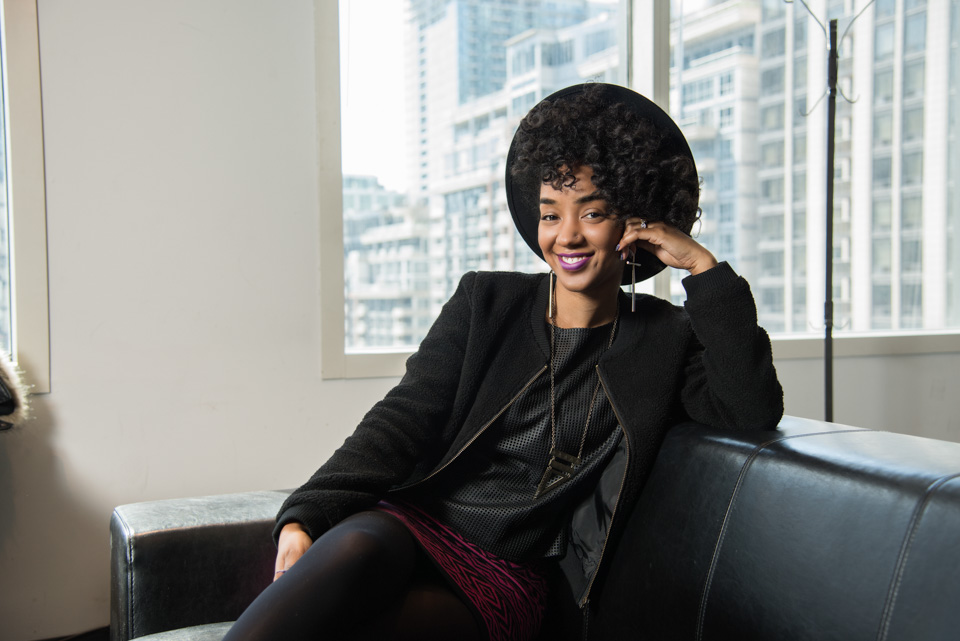
“I know how hard it is to get certain stories out there and I recognize the platform as a privilege.”
What have you enjoyed most so far about working on the show?
Learning. I feel like I’m in school a little bit. I told them from the beginning, ‘listen I’m so hungry, like feed me, I want to learn. I want to grow,’ and that’s exactly what’s been happening. I’ve been learning and growing. The other part of the learning is learning about all the incredible artists and artistic movements happening across the country so although I’ve done a lot – it’s been very Toronto centric and it’s also Toronto centric within specific communities, which is great, but I realized I’ve been living in a bit of a bubble and doing “Exhibitionists”, working with this incredible team that’s looking always far and wide for all sorts of really cool things, a whole new world has opened up to me, which is really incredible.
When it comes to your column, some of the topics that you have written about have gained a lot of traction on social media. How do you decide what you’re going to write about?
“Exhibitionists” is awesome, but it’s also a team that puts it together — and I’m just the face of that team, whereas the column, it’s a little bit more my thing and there’s not so many people that I have to go through in order to pitch a story. It’s literally what percolates my interest in a particular moment. What has me questioning certain things? I don’t consider myself an expert on any specific area, I’m just someone who’s interested in a ton of different things and have had the privilege to straddle multiple worlds. I think that’s why the column gets to be as wide and as varied as it has been. Also, because I’ve worked in community for so long and worked with grassroots organizations, I know how hard it is to get certain stories out there and I recognize the platform as a privilege as well that I’m trying to be accountable and respectful about. Accountable to the media and responsible about the privilege that it is, so I think that’s part of what also shapes my decisions. It’s not to say that I have to use this to talk about every issue that the media is ignoring, but a lot of issues are really important to me and I think are important to art and culture in Canada and don’t get talked about enough. Luckily, I’ve been able to be in spaces where people are talking about this all the time and thinking about it and creating around it and I can help to support all of that by writing about it.
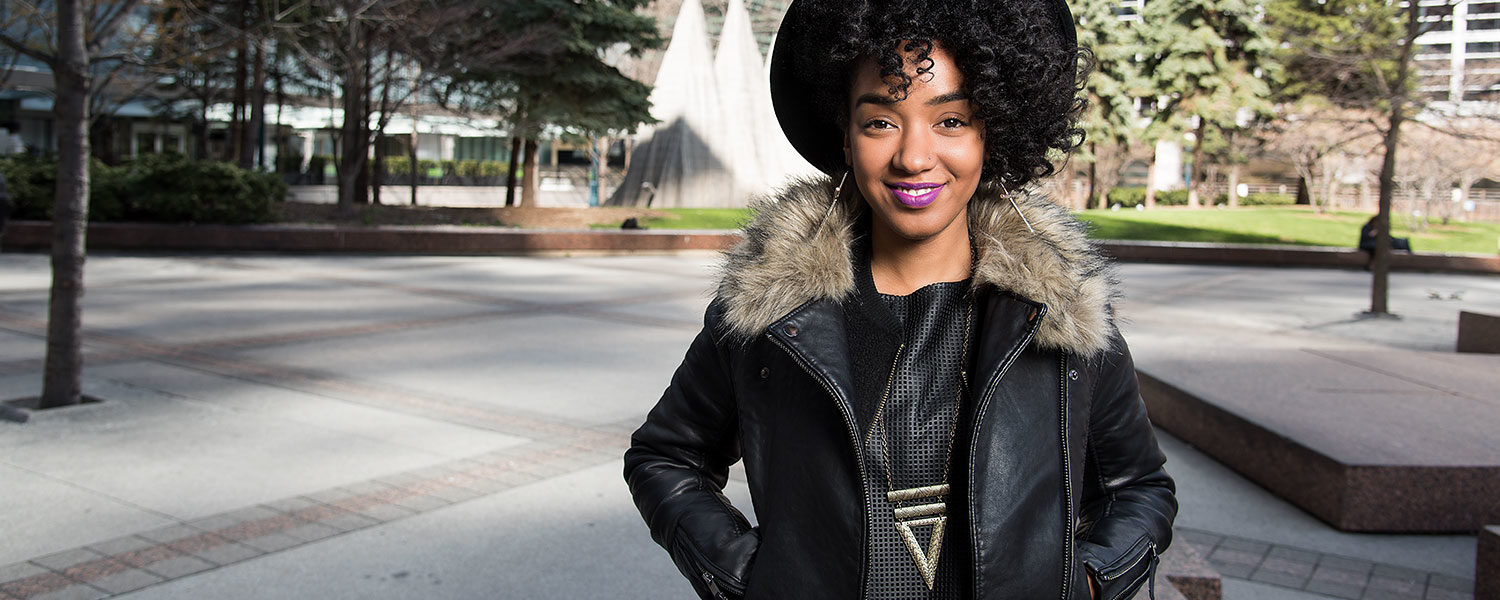
What’s it been like pitching ideas that may not be typically covered in mainstream media to the CBC?
For “Exhibitionists” I would say I was so impatient, I was like, ‘We have to do this story, and that story, and why haven’t we covered this yet?’ And it took a while to really sink in that “Exhibitionists” has to be representative of a lot. It has to be diverse regionally and Canada’s a humongous country, and then it has to be diverse culturally and then it has to be diverse based on the types of mediums of arts that we’re exploring so balance of all those things is a crazy juggling act that I have zero experience in. I do not have the skills to do. That’s why there’s a team of producers and executive producers that are working super hard to do it. When the larger picture was illustrated to me — I was like wow, I need to shut up and really come correct and when I’m pitching a story, make sure it makes sense. And not just because I think it’s important. Maybe it’s not the right space for it in this moment, but maybe it will be later.
I was at a panel about arts being used for social change recently. Ify, a Toronto-based comedian on the panel, said that just being a young, Black woman in an industry dominated by white men — just by taking space — is political. What are your thoughts on that sentiment?
Definitely — I think just the presence of bodies that are rarely represented, being in this building, being on camera and being decision makers as well, as people who are content creators, is really important. To expand on that, I know as soon as I got my contract, and I’ve written about this already, one of the first things I said was I would do my own hair. And that was a really important piece for me, because I knew that even if I didn’t talk about it, just the visual of seeing me with an afro or natural hair on the screen, and maybe even switching it up sometimes and it being straight, but just the fact of that visual, is a political statement and is a statement that I really wanted to have control over.
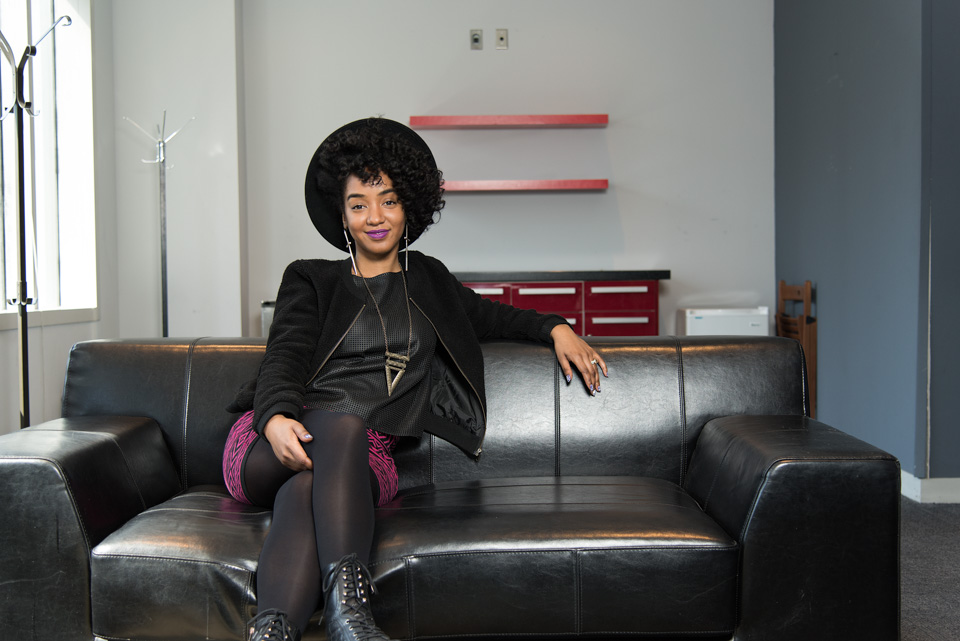
“Just the visual of seeing me with an afro or natural hair on the screen … is a political statement and is a statement that I really wanted to have control over.”
You wear a lot of different hats — artist, educator, host, scholar. How do you keep yourself organized? How do you juggle them?
I don’t do all of them at the same time, that’s probably the only way that it’s possible. I prioritize different things at different moments. And within each thing I try to find learning opportunities that will help me in the other areas. [For example] for the column I wrote about hip-hop education and I used a lot of the research that I’d used in my thesis, which probably no one will ever read. I was able to write this much more accessible and available article on CBC and it wouldn’t have been the same article if I hadn’t done all of that scholarly work. But it’s tough. And some days I’m much better than others.
It’s kind of reflective of what’s becoming of our generation of professionals. Multi-faceted careers, wearing multiple hats.
You kind of have to.
What have you found to be some of the pros and cons of that type of career?
Well, the cons, clearly, are no stability, partly wearing multiple hats because we can’t survive or thrive with one hat and so, in part, you have multiple hustles in order to make enough to be able to live the life that you want. But the pros of it are that you get to learn so much. You get to experiment and play and get to be a student of life in so many different ways. I was on “Metro Morning” yesterday talking about Lemonade and right before I left I was like, oh yeah, bell hooks, Sisters of the Yam. I haven’t read that in like 10 years. I started reading it when I was an undergraduate doing women and gender studies as my minor and it was hugely transformative for me in that moment and then I kind of went away from it and I hadn’t really looked at it in a long time. So, on my way to CBC I read the first chapter and it just completely grounded me in the perspective that I wanted to have on Beyoncé and an incredible piece of work. And being able to come out of the scholarly world, and also the activist world, that helped to introduce me to bell hooks and then bring that into this media world that I’m now in, I’m glad that I have these multiple sort of career points that I’ve been able to straddle that will allow my perspective to be coloured by so many different things.
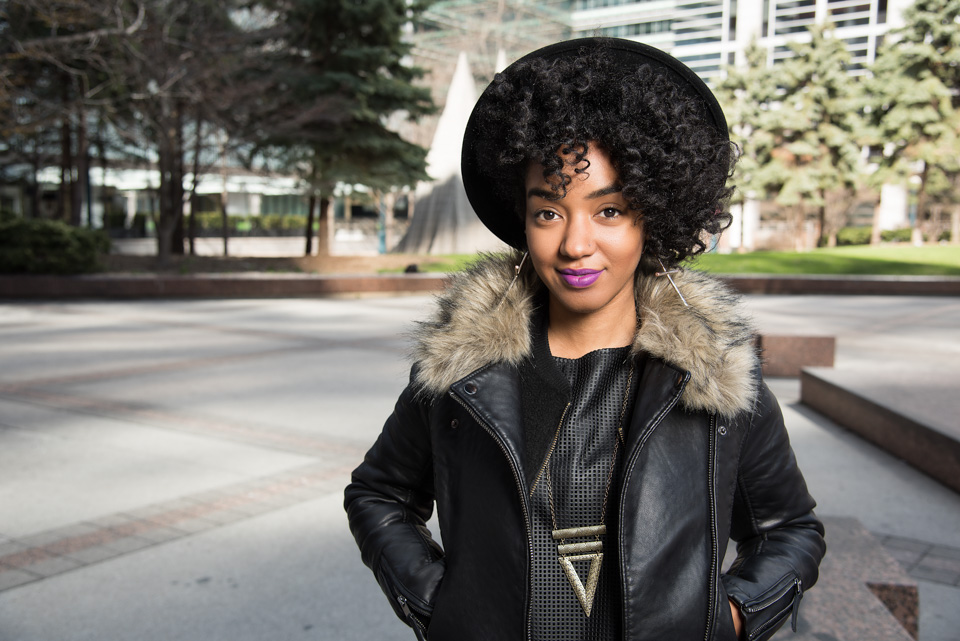
“I need to see examples of what it is that I want to be in order to even recognize the possibility of being that.”
Amanda the artist. Where is she going?
I’m doing a really amazing residency, a playwright residency at Cahoots Theatre and they’ve been supporting me for a couple of years now through the development of one particular work called Other Side of the Game, which is a play based on the whole idea of being ride or die and that I’ve been working on it for a long time and I’m, fingers crossed, hopefully going to have it produced next year. So, when it comes to the theatre I haven’t done that much work and I haven’t been in it full-time, but I’ve always loved it and I find it such a magical medium. I love it, but I think that part of why I chose to go to the theatre was because I saw so many women who looked like me in the theatre, whereas when I looked at the television, especially Canadian television, I saw nobody that looked like me, but my first love has always been film, and increasingly television, because television is becoming really incredible and has production values that are really close to film these days.
How has the increase in seeing more women who look like you on television — albeit American television — impacted you?
Oh, it’s been huge. It’s so crazy. I wish I was a different type of person. I wish I was like Prince. It sounds ridiculous — but I wish I was like Prince in the sense that it didn’t seem like he needed to see an example of what he wanted to be in order to be it. He was that visionary, that he could just construct it. Who makes their first appearance on TV in a leopard print bikini and thigh high boots? Like, who does that? But unfortunately, I’m not that visionary, so very often I need to see examples of what it is that I want to be in order to even recognize the possibility of being that.
I remember when I saw the commercial saying that there was going to be a television show starring a Black woman, written by a Black woman, produced by a Black woman, based on the real life of a Black woman named “Scandal”, I was like excuse me, what? When I saw Kerry Washington portray Olivia Pope, this super boss woman, who’s making all these decisions, in this very problematic relationship, my jaw could not pick up from the ground.
And then I had to research — and I knew who Shonda Rhimes was because I had watched “Grey’s Anatomy”, and I had watched “Private Practice” as well too — but she was kind of like a whisper, like there’s a Black woman who actually did this thing. But now to see that she had started this show starring a Black woman I started to really do my research and got so inspired. And then Issa Rae inspired me and Courtney Kemp Agboh, the woman behind “Power”, and then I started to realize like “Girlfriends” was created by Mara Brock Akil and “The Game” and “Being Mary Jane”, and so researching all of these women and realizing, hey you could be a content creator. Did you ever think about that? It literally opens up your world of possibility to say, ‘hey did you know that you could be doing this?’
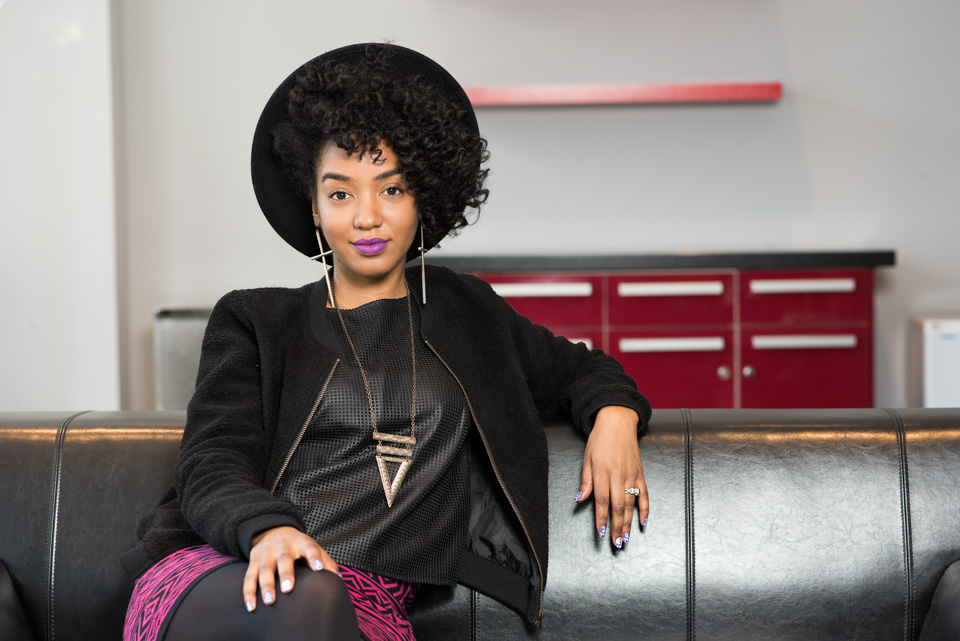
“I hope is [hip-hop] will be as respected, as supported, as endorsed and as resourced as indie rock is here.”
Making the transition into television, what’s been most eye-opening?
I think I’ve just grown in terms of the level of respect I have for how much prep it takes to produce really good television. I’m like man, it takes a lot. Even the show that I might think is kind of crappy, I’m like man it took a lot to make that crap. I’m just starting to really understand all of the pieces that need to come together in order to do that.
I read your column on Tory Lanez and the respect — or lack thereof — Canadian hip-hop gets here. Where would you like to see Canadian hip-hop in the next decade?
It’s just crazy to me, that Drake comes from Canada and Drake is one of the biggest artists in the world, period, yet the genre that built him up still is not respected in the country that he comes from. And so, what I hope is it will be as respected, as supported, as endorsed and as resourced as indie rock is here. What that means is media covering it. What that means is it getting nominated in all the major categories at awards shows. What that means is having music critics that are informed about the culture, and understand it and know it and love it, hired by mainstream publications. I just hope it’s not seen as an add-on. It’s seen as a necessary — it’s like in order to be complete in our coverage on anything to do with Canadian culture we need to be talking about the hip-hop scene. I feel like there needs to be more opportunities. Like OVO is awesome and amazing and I totally support the movement, but there needs to be multiple movements and it needs to be recognized across the country as well. I just hope we’re not here [having this conversation] 10 years from now, because I feel like it happened 10 years ago. But structural things don’t change until culture changes, until people’s minds start to change, until they realize, oh, hey, what a crazy idea it was to have Sting play the halftime show at All Star Weekend when we at one point had the top three positions in Billboard and none of those genres of music were represented at all.
Photos © Isa Miguel Ransome + Urbanology Magazine

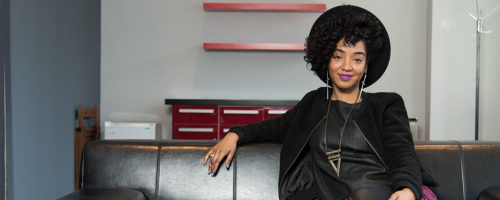


4 Comments
Congratulations, sis
It goes without saying but sometimes it must be said, I salute your journey amd all your success homegirl. The movement is always inspiring.
Amanda was a star BEFORE arriving to CBC…her shine just has a further reach now. Keep making space for the diverse voices, minds, and talents that contribute to Canada. Keep enriching Canada culturally, so we can one day change it structurally! Congrats on all your learning and amazing work…keep doing you sister!
Pingback: AfroChic: Reclaiming Identity - Urbanology Magazine